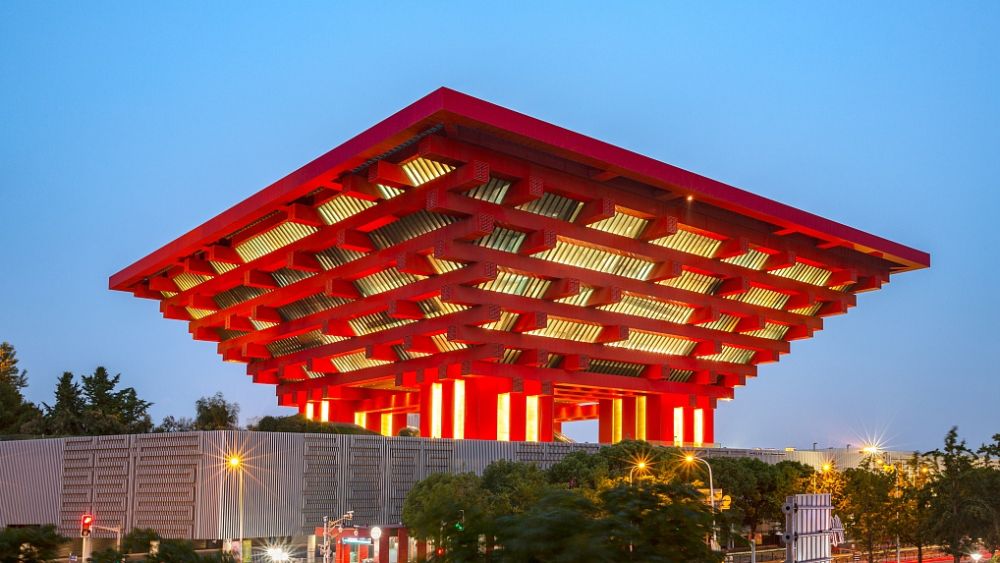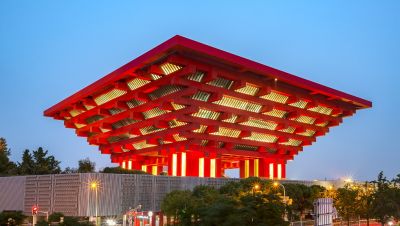

The Ancient Chinese Bronze Gallery Tour at the Shanghai Museum is a journey through one of the most comprehensive collections of Chinese bronze artifacts in the world. Spanning from the 18th century BC to the 3rd century BC, the gallery showcases a variety of objects such as ceremonial vessels, weapons, and bells, each showcasing the exquisite craftsmanship of ancient Chinese artisans. Visitors will marvel at the intricate designs and inscriptions, which offer a glimpse into the rituals, politics, and culture of ancient Chinese civilizations. During the guided tour, an expert will provide in-depth commentary on the significance of the bronzes and the technological innovation behind their creation, helping visitors understand how these artifacts have shaped Chinese art and history.
This immersive experience in the Chinese Calligraphy and Painting Gallery is a must for anyone interested in the fine arts of China. The gallery houses an extensive collection of artworks, including scrolls, fans, and album leaves, that span over a millennia of Chinese history. Visitors will be taken on a chronological journey which includes explanations of the evolution of various scripts and artistic styles, the symbolism behind certain brush strokes, and the philosophical and cultural context that underpin these elegant forms of artistic expression. Highlighting works by prominent artists across distinct historical periods, the tour elucidates how calligraphy and painting are deeply intertwined with Chinese cultural identity, offering a profound understanding of the country's rich heritage.
The Ceramic Art of China Exhibition offers visitors a captivating display of Chinese pottery and porcelain, featuring pieces that date back to the Neolithic period. The gallery is divided into sections representing different regions and time periods, such as the famed blue and white porcelain from the Yuan and Ming dynastry. Tour attendees will discover the rich variety of ceramic techniques and glazes developed in China, including celadon, tri-colored (sancai), and underglazed red. The gallery does not only display functional wares but also showcases extraordinary ceramic sculptures which reflect religious and mortuary practices of past eras. Each artifact comes with a story, linking the scientific innovation of the time to the artistic expression preserved in these ceramic pieces.
The Jade Carving Mastery Exhibition is an exploration of China's masterful jade carving tradition. Regarded as an emblem of virtue and purity, jade has been intricately woven into Chinese history and spirituality. As visitors peruse this collection, they will find jade objects ranging from ceremonial axes and ornaments to delicate jewelry pieces dating from the Neolithic period to the Qing dynasty. The display highlights jade's significance in ancient rituals and court life, as well as the technical prowess achieved by artisans through millennia. The museum guide provides an enlightening narrative about the myths and legends associated with jade and demonstrates how these refined objects were crafted using both ancient techniques and more modern methods.
Exploring the Dynastic Currency Gallery is a fascinating insight into the economic history of China. Here, visitors will find a comprehensive collection of Chinese currency that dates back to the origins of coinage in the land. This includes knife money, spade money, and round coins with square holes that reflect distinct dynastic periods and the progression of commerce in China. The gallery does an excellent job of contextualizing the importance of these currencies in facilitating trade and shaping social hierarchies. Visitors will also have a chance to see paper money and learn about its introduction during the Tang dynasty, long before it was adopted in the West. A knowledgeable guide will assist visitors in understanding the evolution of Chinese currency, and how these physical tokens of value represent the broader scope of Chinese economic and technological development.
The Chinese Minority Nationalities’ Art Gallery Discovery at the Shanghai Museum is an eye-opening showcase of the rich cultural diversity within China. Reflecting the arts and crafts of China's 55 recognized ethnic minority groups, the exhibit includes an array of costumes, textiles, silverware, and sculptures. Each artifact divulges the unique traditions, beliefs, and lifestyles of the various minority communities. Tour participants will learn about the symbolism of various motifs used in decorative arts, the significance of certain materials, and the social functions these objects perform within their communities. Informative plaques and a well-informed guide offer deeper insights into the techniques used to create these pieces and the ways in which minority arts continue to thrive and evolve.
The Chinese Seals Gallery Experience provides a deep dive into the history and significance of seals in Chinese culture. Seals, or chops, have been utilized for thousands of years in China as a form of signature and proof of authenticity. This exhibition boasts a wide array of seals made from materials like bronze, jade, ivory, and wood, spanning across various dynasties. Within the gallery, visitors will learn about the artistry behind the carving of the seals, the evolution of characters and motifs used, and the significance of seal script in the realm of calligraphy. A guide will explain how seals are not just mere tools but objects of beauty and power, often reflecting the personal tastes and status of their owners. This experience is an intriguing look into an aspect of Chinese cultural heritage that remains relevant and esteemed to this day.
The Exhibit of Ancient Chinese Sculptures at the Shanghai Museum offers a captivating look at the development of sculpture in China from the Han dynasty to the Ming dynasty. The collection includes Buddhist sculptures, tomb figurines, and stone steles, presenting a visual narrative of religious and artistic transformation. Each sculpture tells a story of spiritual devotion or societal roles through expressive forms and detailed iconography. Visitors will marvel at the craftsmanship and attention to detail that these sculptures embody. Museum guides are available to explain the historical context behind these sculptures, their purpose, and the techniques used by the artists, providing visitors with a comprehensive understanding of the importance of sculpture in Chinese culture.
The Silk Road and Related Artifacts Tour at the Shanghai Museum covers the pivotal role of the Silk Road trade routes in linking China with the West. As patrons follow the displays that include textiles, ceramics, and metalworks, they will gain insight into the cross-cultural exchange that occurred over centuries. The artifacts on display reflect the interactions among diverse civilizations, including trade, religious influences, and artistic techniques. Guides offer stories of ancient merchants and how their travels helped disseminate ideas and commodities, shaping the cultural and economic landscapes of the communities along these historic routes. The exhibition is a celebration of connectivity and cultural diversity, highlighting the Silk Road's legacy as a catalyst for one of the earliest forms of globalization.
The Ancient Chinese Coin Casting Workshop at the Shanghai Museum is a hands-on activity that allows visitors to engage directly with the historical process of coin making. Participants will learn about the ancient methods used to craft coins, including the creation of molds and the casting process. Facilitated by experts, the workshop not only teaches the technical aspects but also introduces the cultural and historical context of these ancient practices. Taking part in this activity gives visitors a tangible connection to China's rich numismatic history and the opportunity to create a unique souvenir to take home. It’s not just a passively educational experience; it is a chance to step into the shoes of ancient Chinese artisans and connect with the past in an interactive and memorable way.
